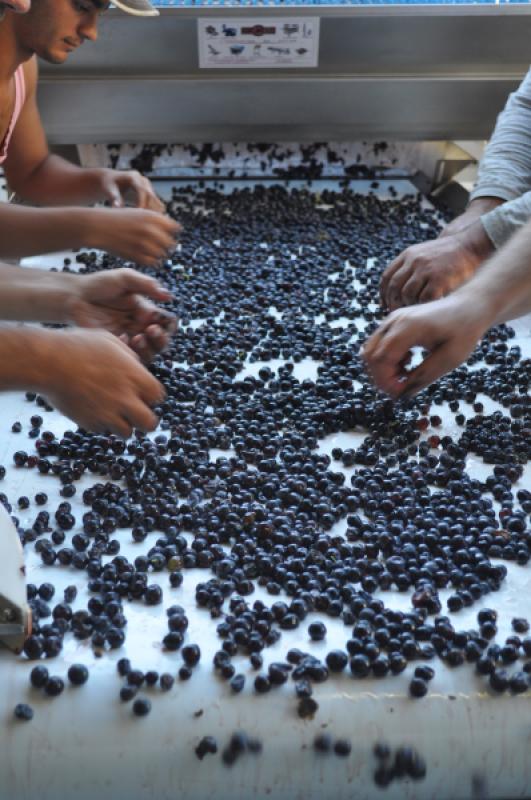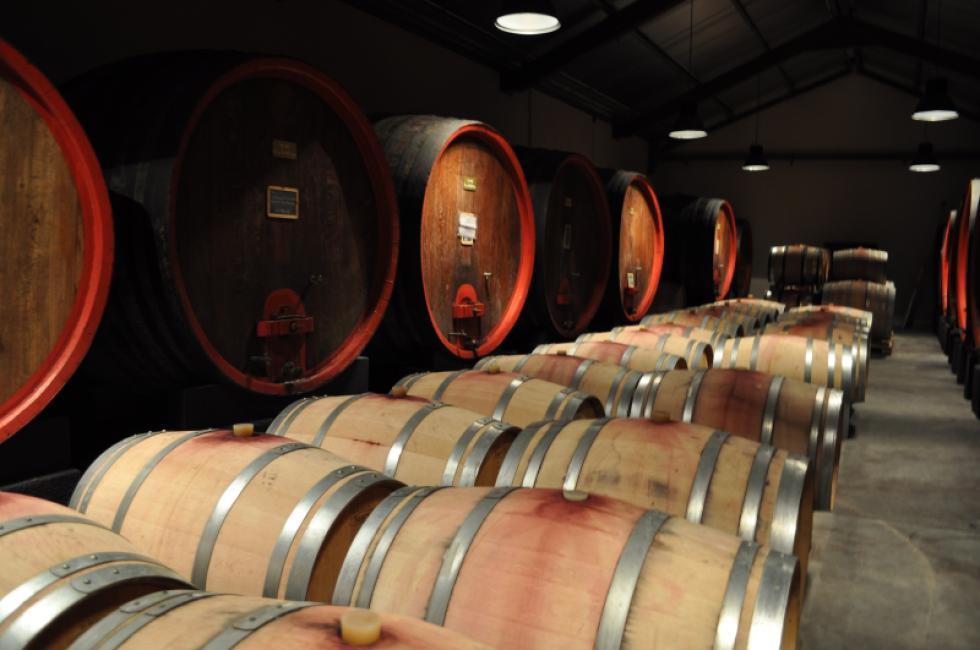During a sunny early June gathering, I ran into a friend, who suggested that I try a Cotes du Rhone that I hadn’t come across before.
He said the wine, which he buys by the case, is his go-to wine for dinner parties and gatherings. I tried to dissuade him, suggesting others that he might like better, but he would have none of my label-dropping and stuck to his guns about this wine from France’s Rhone River Valley, noting that he thought that I’d like it.
Well, I figured I’d wait until the weather turned cooler to check it out — after all, red wines go well with winter fare and cooler temps — but, as things go during New England summers, before the month was out we were putting on sweaters and stoking the fire in the wood stove. So I bought a bottle, and I was really pleased; La Griveliere Cotes du Rhone is a great value. My friend’s recommendation was spot on.
La Griveliere is typical of a well-made Cotes du Rhone wine: it’s smooth and dry with mild tannins, yet layered with complex flavors. Also, like other wines from the region, La Griveliere is a blend of mostly Grenache, 80 percent, followed by Syrah and finished with Carignan and Mourvedre.
According to a regional website, Rhone-wines.com, wines have been made in Coste du Rhone — the original name — since before the Romans took Gaul. The best stuff came from grapes grown on the right bank of the river, and that wine became all the rage with European royalty and the popes living in Avignon during the 14th century. In 1650, to make sure no left bank grapes got mixed in, Louis XIV established rules governing the right bank wines. Those regulations are the basis for today’s region.
By the mid-19th century, somebody realized, not surprisingly, that the left bank grapes also made pretty good wine, and the regulators added that side of the river to the region. As a result, the name had to be changed to Cotes du Rhone, instead of Coste du Rhone, or maybe somebody just misspelled the name, and they let it go. The website is unclear on that point.
When I want to find out more about a wine, the first place I look is the label. I have spent a little time in France and have studied the language, so I wasn’t put off by the entirely French La Griveliere label, which was pretty informative. But that path led me to what seemed to be a dead end.
The grapes are grown, and the wine is made in the village of Chateauneuf-du-Pape by the respected Maison Brotte, one of the oldest and largest family-owned producers in the Southern Rhone Valley.
Charles Brotte, whose wine heritage stretched back to 1880, started Maison Brotte in 1931, creating the first bottling line in the village and developing a worldwide distribution of the company’s high quality wines, the winemaker’s website says.
Today, Maison Brotte, which uses sustainable farming practices and cutting-edge production equipment, is managed by Laurent Brotte, the grandson of the founder. The company has more than 150 acres of vineyards on four estates and has established contractual relationships with surrounding growers for grapes.
With all the information on the website, one would think there would be a mention of La Griveliere. But, there wasn’t. The only hint that the company made the wine was a vaguely similar Cotes du Rhone, Esprit Barville, that retails here for $53 a bottle. The wines are made using the same methods and aging process with an almost identical blend, but the difference may be that the grapes used to make the Barville are from a slightly later picking. That might also account for the slightly higher alcohol content of the Barville.
The website notes that the grapes for the first vats are picked 10 days earlier that those used for the prestige vats. La Griveliere’s label notes a first vat picking. Still, it’s odd that the company doesn’t claim the wine.
So I called up the importer, Opici Wines in Glen Rock, N.J., another family-owned business with a fine pedigree. Opici imports prestigious and popular wines from around the world and has distribution in every state. The 100-year-old company also produces its own wines in California and Italy, the company’s website says.
I asked company spokesman Chris Ganzarell to clear up my confusion with the origin of La Griveliere, a name that’s derived from thrush birds, grive in French, that over-populate the Rhone River Valley and love to eat ripe grapes.
La Griveliere is produced by Brotte exclusively for Opici Wines to distribute in the United States. That’s why it doesn’t show up on the winemaker’s website, he said.
“It’s an excellent wine that drinks like a wine that should cost a lot more, and it’s available throughout New England.”
La Griveliere is well-balanced with aromas of red fruits and spices and hints of vanilla and earth. It’s perfectly suited with grilled white and red meats or light pasta dishes, the tasting notes say.
The wine is light enough to drink year-round and well-matched with summer meals. I had La Griveliere with grilled chicken and a salad, and it was a fine fit. It’s also good for just sipping or having with appetizers.
I’m glad I listened to my friend. Now, I have another good wine that fits with almost any occasion.
La Griveliere is available throughout the Pioneer Valley, and I’ve found it for as little as $8.99. If your wine store doesn’t have it, ask for it. The wine is distributed by Horizon Beverages in Massachusetts.•
Suggestions for wines in the $10 range are always appreciated.
Warren Johnston can be reached at warren.nelson.johnston@gmail.com.






